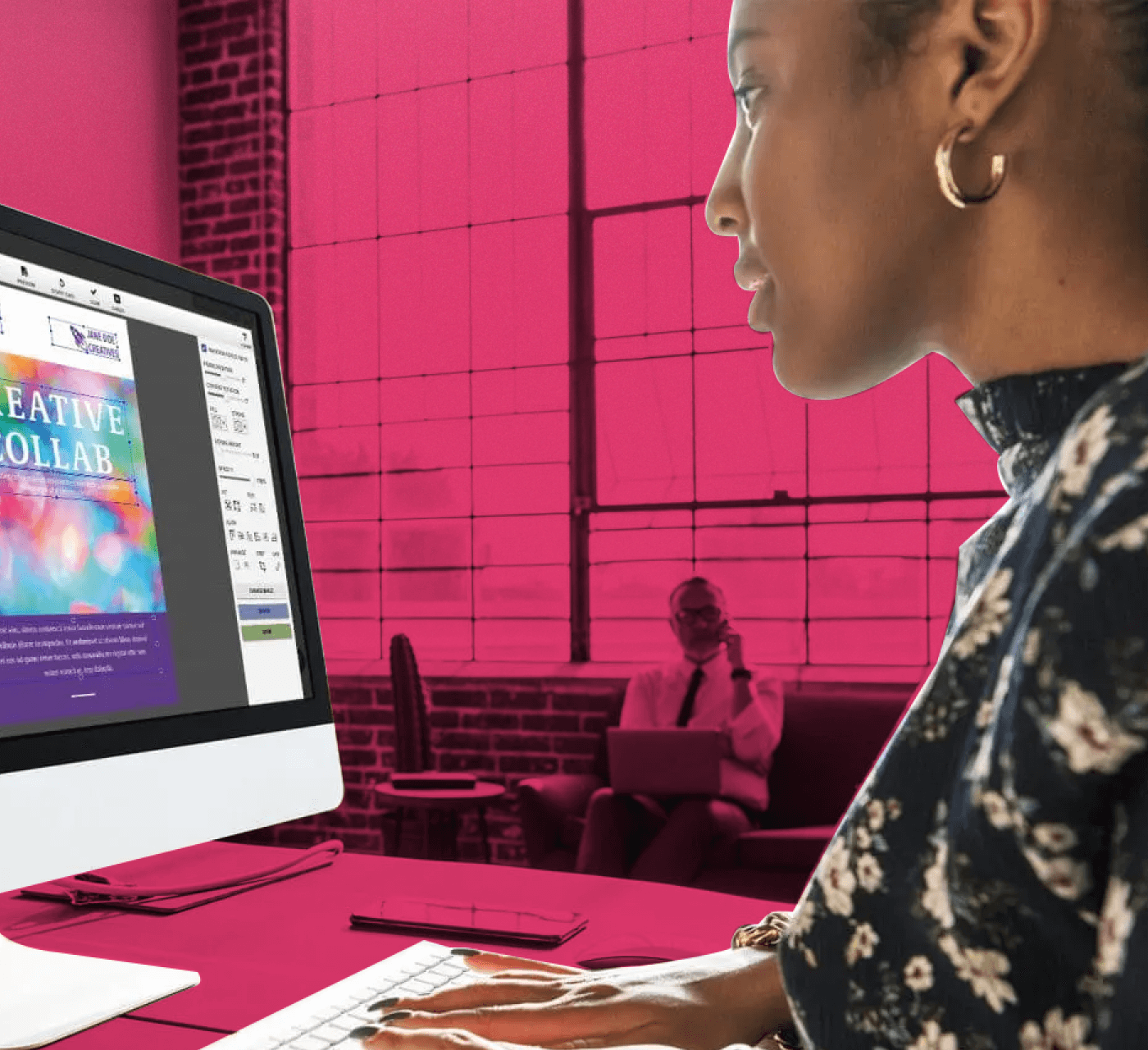If this last year has taught us anything, it’s to expect the unexpected – and adapt quickly. As leaders in creative operations, it’s critical to invest in the success of your team, with a big focus on dexterity and agility—ensuring that they can do their jobs effectively from anywhere and in any circumstance. Understandably, the first step is taking a long, hard look at the current state of your creative operations.
What are Creative Operations?
Creative operations provide structure to the creative process within an organization, with the goal of increasing productivity, allowing teams to create content faster, and generally drive the business’ bottom line.
Why are Creative Operations Important?
According to MediaValet partner, iO Integration, creative operations cover four key responsibilities:
- Formally defining and optimizing processes for creative production.
- Identifying and evaluating gaps in technology to improve workflows.
- Optimizing people, processes and technology involved with creative work.
- Using metrics and KPIs to track and analyze operations.
The importance of these responsibilities is three-fold: Ensuring that everyone is on the same page for roles and responsibilities, tying measurable outcomes and indicators to the work that the creative team does and continually tailoring workflows so the team can run smoothly.
The Top Challenges for Creative Teams
While all of these points sound great on paper, the reality is troublesome. Despite the perceived improvement in operations, a study from InMotionNow found that creative teams are still experiencing challenges with:
- the amount of work they’re being asked to complete, and,
- the speed at which they’re expected to complete projects.
Take a moment to think about your own creative team and consider how much you’re asking them to complete—and how much time you’re giving them to complete these projects. There’s a good chance that your team is also experiencing this challenge.
Another study from AdAge also found that 75% of people don’t think they’re living up to their creative potential.
People need to feel valued, and that they’re successful at what they do. Yet, unfortunately, all signs point to creative professionals feeling overwhelmed and under-utilized. What’s clear is that despite the perception of having proper, well-run creative operations in place, there’s still a lot of work to be done to truly optimize creative processes.
Looking at the Bigger Picture
What we’ve found from conversations with various organizations, as well as industry research, is that creative operations can often be very reactionary—trying to fix individual problems, rather than taking a step back to evaluate the whole picture to better optimize for the future.
With organizations working at such an incredible pace, the easy option is to implement a solution to address the immediate need, often at the department level. Unfortunately, all this tends to do is shift the problem or cause further disconnect and communication silos, making it harder for everyone to get on the same page.
Taking the time to properly evaluate your processes and incorporate the entire picture can be a massive project. To even get started, you need to have a deep understanding of your team, your market, and upcoming trends that you’ll need to address. From our experience working with creative teams across multiple industries, we’ve been able to gain a third-party view of the creative process, and identify trends across industries, locations and organization sizes. The three biggest trends we’ve seen are:
- Remote work will remain a reality
- Technology will be re-evaluated
- Room will be made for creativity
Let’s dive into each in more detail.
Trend #1 – Remote Work Will Remain a Reality
The shift that we’ve seen, in part because of the pandemic, but also due to other factors, is that distributed teams are becoming much more feasible for the average organization. Prior to 2020, around 60% of companies had at least one person on their team working remotely. Now that employees have adapted more to working from home, most have shared that they’d prefer to keep working remotely, at least part-time. As a result, we’re seeing more and more organizations announcing flexible remote-work policies.
The past six months have proven that creative teams can work remotely while staying productive and connected. Some teams are even getting creative and adding coffee breaks or water cooler chats into their daily schedules via phone or Zoom, to hold on to that social aspect.
Next Steps for Creative Operations
From the perspective of creative operations, what this shift really means is that it’s time to take steps to ensure that your team is fully set up. Don’t simply implement temporary solutions, but ones that adapt to these changes as if you’ll work remotely forever. The key question to ask is: what does a sustainable work-from-home environment look like for your team? You’ll need to answer:
- Do you have the proper infrastructure in place?
- Are employees set up for individual success from home?
- Have the appropriate boundaries been set?
Companies had to react quickly to the events of 2020 – making sure they had the right technology set-up to ensure everyone can be successful at home. But, along with making sure the right technology is in place, it’s equally as important to make sure your team is set up for success at home, both mentally and physically. A group office is easily standardized—everyone is working in the same environment with similar desks, chairs, etc. When you’re suddenly thrust into a situation where your home becomes your work area, the environment becomes variable. Some might have an at-home office, but many are working at the kitchen table – sometimes with their kids playing right next to them. Not everyone is operating in the same way. It’s critical to evaluate how you can support these individuals, with equipment and processes that consider this variability.
Establishing boundaries between work and home can also be beneficial to make sure your team can break away from work, when needed. Create a clear routine with a distinction between work and home, to keep your team focused and energized.
Trend #2 – Technology will be Re-Evaluated
The next trend we anticipate is that technology will be seriously re-evaluated in 2021. This past year was very reactionary in regards to the technology that many companies brought in, and a lot of businesses were quick to purchase department-level technology. But, now we’re seeing that teams are taking a step back and looking at what they really need as a business – and where they can save money through consolidation.
The nature of the last year also led to fast-tracked implementation plans. The immediate need was for organizations to get up and running quickly, so that they could continue working. Now, leading into 2021, many of those fast-tracked implementations will need to be re-evaluated and expanded, where required.
Next Steps for Creative Teams
A re-evaluation doesn’t always mean a rip and replace. It can be a change in use or a review of best practices. The whole implementation process has evolved, and what may have been a whiteboard discussion in a meeting room is now on Zoom or Teams; training is different, and the roll-out doesn’t look the same, either. Consider how you’ll approach this, and how you’ll create that infectious culture that’s key in ensuring adoption of your platforms.
Another important thing to keep in mind is that at an organization-level, they may be looking to make cuts. In our industry, we often see technology, in particular, department-level technology, get replaced with something cheaper or more widely-used because the department has trouble explaining the investment. For the pieces of technology that you do love and want to keep, now is the time to prepare to prove ROI.
Our recommendation is to evaluate how your technology can provide value in other departments. For example, while a DAM is built with marketing and creative teams in mind, many other departments can get value from it, too. We’ve seen it used by on-site sales teams in real estate to showcase past projects, by operations to manage relationships with franchisees, and even architect teams to manage 3D models. The more organization-wide your solutions seem, the more easily you’ll be able to justify keeping them.
Trend #3 – Room Will be Made for Creativity
Remember – creatives are already not feeling like they’re living up to their potential. This is now being compounded by the increasing demand for personalized, highly visual content – leaving designers squeezed for time.
As part of creative operations, you need to find ways to empower your creatives and give them wiggle room to do their job. Without space for creativity, and, let’s be honest, a second to breathe, your creative team is at risk of burnout, which, in turn, puts your organization at risk. Where there’s burnout, there’s often turnover, volatility, and disconnected workers. Creative leaders who realize the importance of these issues and find ways to increase bandwidth to make room for creativity, exploration and risk will achieve a significant advantage over competitors in 2021.
Next Steps for Creative Teams
Creating room for creativity is an interesting undertaking, it’s harder to quantify and even harder to justify, but as creative operations leaders, there are ways to give your creative team incremental wins that give them their time back, without needing to overhaul your workflows.
Firstly, a large amount of free time can be found just in automating repetitive tasks. This usually comes from administrative tasks, like sending files to other departments or uploading final designs to a file-share system. This type of busy-work takes up a significant portion of the day that could be spent being creative. Finding solutions helps reduce the burden of these tasks and can help free up creative time for more exploration and discovery.
Another opportunity comes from providing more breathing room with deadlines. This is definitely easier said than done, and often stems from having uncomfortable conversations with other teams in order to set boundaries and expectations.
The final opportunity comes from simplifying your creatives’ technology stack. This doesn’t mean to overhaul the technologies you already use, but rather see if there are technologies that can be hidden or consolidated using integrations. In an IDC survey, over 80% of business leaders agreed that problems often happen because their systems don’t talk to each other. When solutions are integrated, it enables your team to work out of fewer applications, while still staying linked to the other tools they need to be productive and connected.
Another value-add of integration comes from enhancing your workflow. In the same IDC survey, 43% of employees said they needed to copy-and-paste information across multiple platforms. When all your applications connect and speak to each other, tasks can be streamlined or automated, saving time from having to duplicate efforts across platforms, and reducing room for error.
Prioritize the Experience
There’s undeniably a shift that’s occurred across all industries to prioritize experience. Think about industry leaders like Tesla, Apple or Amazon—they all design with the intent to maximize customer experience. Consider how you can apply this to creative operations:
- What kind of experience are you creating for your employees?
- How are you using technology to enable dynamic experiences for your team?
Creating a workflow is a design challenge just like anything else, so design with intent and design with experience in mind. As we look to 2021 and beyond, technology is going to be a huge enabler of these experiences. We need to choose technologies that will provide a seamless experience and lean into the way creatives are working, and the way you want them to work.
Re-Evaluate Your Creative Operations
If we consider these three trends, it’s clear that there’s an opportunity here to take this time to prioritize and lean into the idea of experience. Most people have accepted that things are shifting and changing, and that there’s a movement happening. It’s the perfect opportunity to re-look at your team’s workflow and adapt.
It’s no longer acceptable to rely on systems that can only be accessed while physically inside an office building. Work is a place you log into, not somewhere you go. We need to be able to access everything, anywhere, all the time. Creative operations now need to allow employees to be flexible.
Related Articles
What a DAM good read!
Fuel your DAM knowledge by browsing our Resource library




